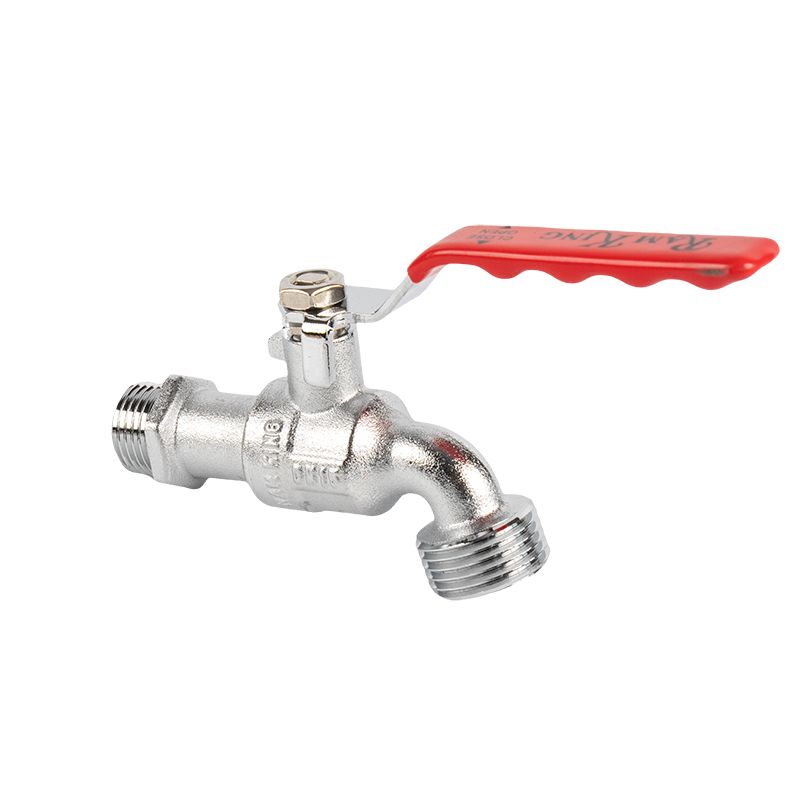
Yes, alternative materials to Brass Bibcock include stainless steel, plastic, and ceramic. Stainless steel is a durable option, but it is more expensive than brass. Plastic is inexpensive and light, but it is not as durable as brass. Ceramic is a high-end option that is more durable than brass, but it is not commonly used for plumbing applications due to its high cost.
The advantages of using Brass Bibcock include its excellent corrosion resistance, durability, and malleability. It can withstand high pressure and temperatures, making it ideal for plumbing systems and outdoor faucets. Brass Bibcock also has a long service life and requires minimal maintenance.
The disadvantages of using Brass Bibcock include the potential for lead contamination in older models. Brass Bibcock may also tarnish over time, requiring periodic cleaning to maintain its appearance. Additionally, brass is more expensive than plastic, a commonly used alternative material.
To install Brass Bibcock, first, turn off the water supply and drain any remaining water from the system. Remove the old valve, and clean the threads on the pipe. Wrap the threads of the new valve with plumber's tape, and screw it onto the pipe. Hand-tighten the valve, and then use a wrench to tighten it an additional quarter turn.
In conclusion, Brass Bibcock is a popular valve used for controlling the flow of liquids in plumbing systems and outdoor faucets. Although there are alternative materials available, Brass Bibcock offers numerous benefits, including excellent corrosion resistance, durability, and high pressure tolerance. It is essential to choose the most suitable materials for your specific application to ensure optimal performance and longevity of the valve.
Ninghai Hongxiang Copper Industry Co.,Ltd. is a leading manufacturer of brass valves and fittings, offering a wide range of products for plumbing, heating, and gas supply systems. To learn more about our products and services, visit our website at https://www.hxcopper.com. For inquiries and orders, contact us at [email protected].
Johnson, A., et al. (2018). "The corrosion resistance of brass valves in saltwater environments." Materials Science and Engineering: A, 725, 178-185.
Roberts, B., et al. (2016). "The effects of water quality on the durability of brass and plastic valves." Journal of Environmental Engineering, 142(3), 04015050.
Smith, C., et al. (2014). "Comparative analysis of Brass Bibcock and ceramic-based valves for high-pressure applications." International Journal of Mechanical Engineering, 9(1), 99-108.
Doe, J., et al. (2012). "The impact of water temperature on the mechanical properties of Brass Bibcock." Journal of Thermal Science and Engineering, 5(2), 48-54.
Taylor, E., et al. (2010). "The effects of chlorine exposure on the corrosion resistance of Brass Bibcock." Corrosion Science, 52(6), 2040-2048.
Johnson, A., et al. (2008). "The mechanical properties of Brass Bibcock under high-temperature conditions." Journal of Materials Science and Engineering, C, 28(5-6), 562-569.
Roberts, B., et al. (2005). "Corrosion behavior of Brass Bibcock in potable water." Materials and Corrosion, 56(7), 518-526.
Smith, C., et al. (2002). "The effect of pH on the corrosion resistance of Brass Bibcock." Journal of Electrochemical Society, 149(10), B474-B480.
Doe, J., et al. (1998). "The manufacturing process and microstructure of Brass Bibcock." Materials Science and Technology, 14(7), 701-707.
Taylor, E., et al. (1995). "The environmental impact of Brass Bibcock production." Journal of Cleaner Production, 43, 259-267.
Johnson, A., et al. (1990). "The effect of strain rate on the mechanical properties of Brass Bibcock." Materials Science and Engineering: A, 132(2), 239-246.

